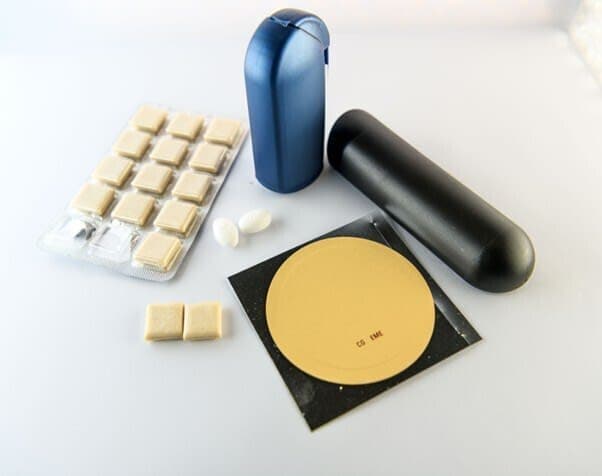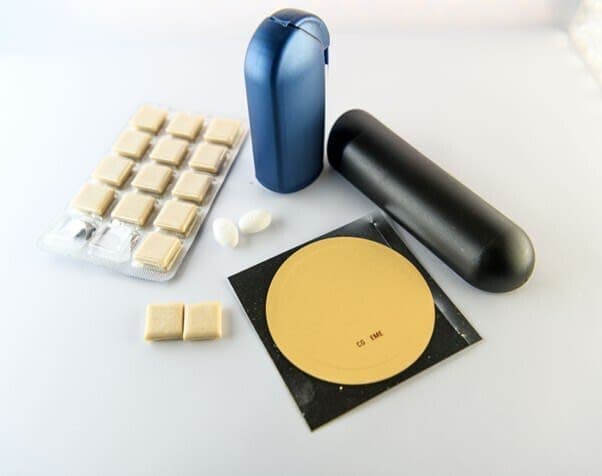Nicotine patches are a type of nicotine replacement therapy (NRT) that can be used to help you stop smoking.
Nicotine patches help to reduce cravings and feelings of withdrawal by replacing some of the nicotine you would normally get from smoking. A nicotine patch is often used together with a faster-acting type of NRT (such as nicotine lozenges, gum, or mouth spray) to help you quit. Watch the video and read the information below to learn about nicotine patches and how to use them to help you stop smoking.
How to use nicotine patches
A nicotine patch is applied by sticking it onto your skin, much like you would a band-aid. The nicotine in the patch is slowly absorbed into your body through your skin. Here are two simple steps to use nicotine patches correctly:
Step one: Press the patch onto a dry hairless area of skin for about 20 seconds. You can put it on your chest, arm, or back. Use a different area of your skin each day. If you applied the patch correctly, you can shower, bathe, or swim without worrying about it coming off.
Step two: Rinse your hands with water.
It can take a while for the patch to start working, so use a faster-acting type of NRT (nicotine gum, mouth spray or lozenge) to help reduce cravings.
It’s important to apply the patch to different areas of skin day-to-day. This will help to prevent skin irritation. Creams can help to reduce skin irritation if it does occur and changing brands can also help. It’s best to speak to your doctor or pharmacist who can provide more information.
Some people can experience vivid dreams whilst using patches. Be reassured that most vivid dreams go away after several days of using NRT. Some simple things can help prevent this dreaming:
Reduce your caffeine intake by at least half and avoid consuming caffeine in the evening.
Ensure you are using a faster-acting type of NRT (such as the nicotine mouth spray, gum or lozenge) whenever you think you’ll want one or when you feel like a cigarette.
Sleep disturbance is common when stopping smoking; talk to your doctor or pharmacist for advice.

Press the patch onto a dry hairless area of skin for about 20 seconds. You can put it on your chest, arm, or back. Use a different area of your skin each day.
How the nicotine patch helps
The nicotine patch helps by replacing some of the nicotine you would normally get from smoking; it can help to manage cravings. Using the nicotine patch can also help to manage some of the other symptoms of nicotine withdrawal when you quit such as difficulty concentrating, frustration, restlessness and anxiety.
After putting the patch on, it can take hours to absorb the nicotine and get to a comfortable level. This is why it’s important to use the patch in combination with a faster-acting type of NRT.
What type of nicotine patch should I use?
Patches come in two types, 16-hour day patches and 24-hour day and night patches. The patches also come in different strengths. The right type and strength depend on when you have your first cigarette in the morning and the number of cigarettes that you smoke each day – talk to your doctor or pharmacist about the right option for you.
If you're using the 16-hour day patch, remove it before bed. If you're using the 24-hour day and night patch, remove and replace first thing in the morning.
Use the patch for at least eight weeks. You can stay with the same strength of patch for the whole time or reduce the strength of patch if you like. Discuss the best approach for you with your doctor or pharmacist.

If you're using the 16-hour day patch, remove it before bed. If you're using the 24-hour day and night patch, remove and replace first thing in the morning.
How can I get the nicotine patch at the discounted PBS rate?
You can buy nicotine patches at pharmacies, supermarkets or online. You can also get the patches at a discounted price on the Pharmaceutical Benefits Scheme (PBS). To get nicotine patches at the discounted PBS price, you need to get a prescription from your doctor, which you take to your pharmacist.
Under the Closing the Gap Scheme, eligible Aboriginal and Torres Strait Islander people can access nicotine patches, gum and lozenges for free or for a small co-payment. Speak to your doctor or call the Aboriginal Quitline on 13 7848 for more information.
For your best chance of quitting
For your best chance of success, call Quitline and use a faster-acting type of NRT (mouth spray, gum or lozenge), along with the nicotine patch. NRT helps to reduce your cravings to smoke, while Quitline will help you to identify your other triggers to smoke. Call 13 7848 to speak to our friendly and qualified Quitline counsellors today.
Looking for information on nicotine inhalators? Nicotine inhalators (also known as nicotine inhalers) were discontinued by manufacturers and are no longer available. Alternative faster-acting types of NRT include the mouth spray, gum and lozenges.

Combination therapy can help you quit.
For more information: talk to your doctor, pharmacist or Quitline. Your doctor or pharmacist are best to advise you on your use of NRT. Our Quitline counsellors can give general advice and support to ensure you are using it correctly.
For an overview of nicotine replacement therapy, watch our NRT frequently asked questions video. You can also via the patient resources on the Alfred Health website.



